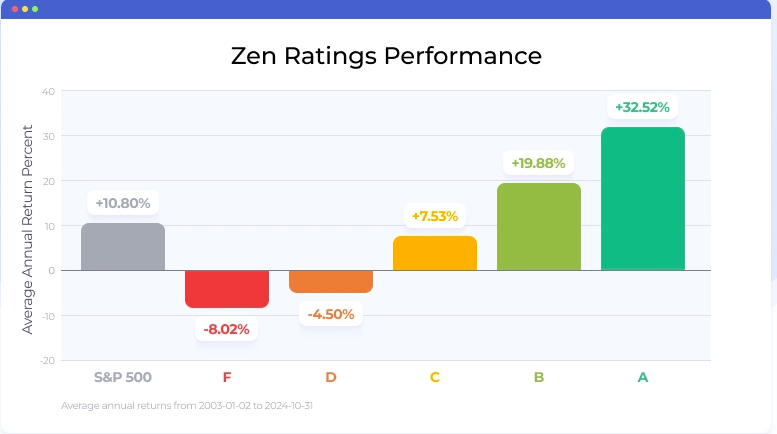Since they handle sensitive and personal financial information, security as well as privacy are crucial when utilizing AI trading platforms that predict/analyze the prices of stocks. An unauthorized or unintentional misuse of data could result in massive financial losses as well as reputational harm. Here are 10 best guidelines to determine the privacy and security of these platforms.
1. Take into consideration encryption of data
Transmitting encrypted data: Ensure that your platform is using secure protocols (e.g., TLS/SSL) to protect data that is transmitted between your device and their servers.
Transporting encrypted data Verify that the sensitive data being stored on a server has been encrypted with strong encryption standards, like AES-256.
End-to-end encrypted communications: Be sure the platform you are using provides encryption that is end-to-end to protect any sensitive data.
2. Examine the Authentication Mechanisms
Two-factor authentication (also called copyright) is a great method of increasing security.
Biometric authentication: Check if your platform provides biometric login for mobile applications (e.g. fingerprint or facial recognition).
Password policies. Verify that the platform has policies on passwords that are secure (e.g., length minimum and complexity requirements).
3. Verify if you are in Compliance
Financial regulations: Ensure conformity with the relevant financial regulation (e.g. SEC FINRA MiFID II).
Laws on data protection: Make sure you are in compliance with privacy laws (e.g. GDPR, CCPA), if you're in or doing business in regions covered by these laws.
Audit certifications: Verify that your platform has been examined by a third-party auditor or certifications.
4. Review Data Access Controls
Role Based Access: Verify that the platform utilizes role-based-access controls (RBAC), to limit access to information to only authorized users.
Check if you are able to assign permissions on a granular level for different team members.
Activity monitoring: See whether the platform tracks and monitors the user's activity for suspicious behavior.
5. Assess the vulnerability of your organization.
Regular updates: Make sure your platform is updated regularly its software in order to patch weaknesses.
Penetration testing: Verify that the platform has been subjected to regular penetration testing to identify and fix security weaknesses.
Look for bug bounty programs. They're created to inspire other security researchers (such as those at Google) to share security issues.
6. Evaluate Data Privacy Policies
Transparency. Read the platform's Privacy Policy to understand the types of information collected and how it will be utilized.
Data minimization: Ensure the platform only collects data necessary for its function.
Third-party Sharing: Determine if the platform is sharing its data with third parties and, if so, under what terms.
7. Secure API Utilization is Verified
API security: Make sure the API of the platform API uses secure authentication methods (e.g., OAuth, API keys) and secures data exchanges.
Rate-limiting: Check if the API has a limit on rate to avoid abuse and brute-force attacks.
Review access logs. Check that the system tracks API usage and records it to track usage.
8. Assess Incident Reaction and Recovery
Incident Response Plan: Ensure that your platform is equipped with an incident response strategy for handling data breaches.
Notification policies: Check if the platform notifies users promptly in the case of a security breach.
Backups of data: Make sure the platform regularly backs up the data it stores and has a disaster recovery plan in place.
9. Check out the security measures for physical security
Security of the data center: Make sure the servers on your platform are in data centers that are equipped with physical security measures including access control and surveillance.
Redundancy: Check if there are redundant systems on the platform to ensure that data is available in the event of a hardware failure.
Verify the geographical distribution of data to ensure resilience.
10. Test user privacy controls
Data deletion. Make sure you can erase all data permanently from the platform once you cease using the service.
Privacy settings: Check if there are privacy settings available that permit you to limit the information shared and visible.
Check to see if anonymization is applied to the data used for analytics or machine learning.
Bonus Tips
User feedback and reviews to determine the security of the platform and privacy.
Trial period: Try out the security and privacy features of the platform by downloading the free trial.
Customer support: Make sure that you have a reliable support system for security-related issues or concerns.
You can evaluate the privacy, security, as well as the accuracy of AI platforms for trading stocks by following these suggestions. This will ensure that your financial data and personal data are safe. A secure trading platform is not only a way to safeguard your assets, it also helps build confidence and trust. View the recommended incite url for more recommendations including ai for stock predictions, best ai trading software, ai investment app, investment ai, best ai for trading, investment ai, ai trade, stock ai, AI stock trading bot free, best ai for trading and more.

Top 10 Tips To Maintain And Update Ai Trading Platforms
It is essential to review the updates and maintenance practices of AI-driven trading and stock prediction platforms. This will help ensure that they are secure and are in sync with the changing market conditions. Here are the top 10 ways to analyze their update and maintenance practices:
1. Updates are frequently made
Find out the frequency of updates on your platform (e.g. weekly, monthly or even quarterly).
Why are regular updates an indication of active development, and a responsiveness to market changes.
2. Transparency of Release Notes
TIP: Go through the release notes of your platform to find out about any updates or changes.
Transparent release notes demonstrate the platform’s commitment to continuous improvements.
3. AI Model Retraining Schedule
Tip: Find out how often the AI models are retrained by using fresh data.
Why: As markets change and models change, they must adapt so that they remain relevant and relevant.
4. Correction of bugs and issues
Tip - Assess the speed with which the platform resolves bugs and technical issues.
Why: Bug fixes are made as soon as possible to make sure that the platform remains robust and efficient.
5. Security Updates
Tips Verify that the security protocols on your platform are frequently updated to protect users' data and trades.
Why is that cybersecurity is a crucial aspect of financial platforms. It aids in safeguarding against fraud and breaches.
6. Integration of New Features
Tip: See the latest features introduced by the platform (e.g. advanced analytics or data sources, etc.) in response to feedback from users or market trends.
What's the reason? Feature updates demonstrate creativity and responsiveness to the needs of users.
7. Backward Compatibility
Tip : Make sure updates don't disrupt existing functionality or require major configuration.
Why? The backward compatibility of the software makes sure that the software can be used with ease.
8. Communication between the User and Maintenance Personnel
Take a look at the method by how your platform communicates to users of planned maintenance or outages.
What is the reason? Clear communication prevents interruptions and increases confidence.
9. Performance Monitoring & Optimization
Tip: Verify that the platform continuously monitors the performance metrics like latency or accuracy and improves their systems.
Why: Ongoing optimization ensures the platform remains efficient and scalable.
10. Conformity to Regulatory Changes
Tip: See if your platform is updated with the most recent features, policies and laws regarding data privacy or the latest financial regulations.
What's the reason? Compliance with regulations is necessary to protect yourself from legal liability and to maintain trust among consumers.
Bonus Tip: Integration of user feedback
Check if the platform actively incorporates user feedback into maintenance and updates. This shows a genuinely user-centric approach and commitment to improvement.
By evaluating all of these elements, it's possible to make sure you're sure the AI stock trading platform you select has been properly maintained. It must also be up-to-date and adaptable to market changes. Read the most popular chart ai trading for more examples including ai tools for trading, ai share trading, AI stock analysis, best ai for stock trading, ai options, free ai tool for stock market india, how to use ai for stock trading, stock trading ai, ai options trading, best stock prediction website and more.
